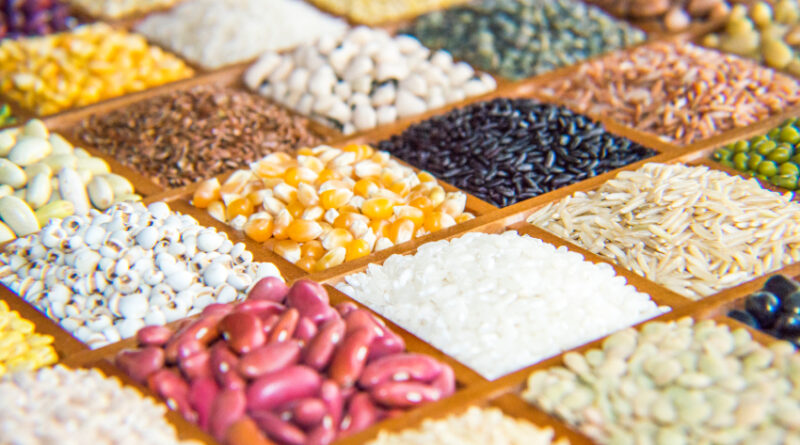Food Inflation Continues To Worry As Pulses And Cereals Put Pressure
By Ayaan Kartik
Ministry of Statistics and Programme Implementation released the Consumer Price Index print for the month of October on November 13. As per the data, retail inflation eased to 4.87 per cent in October from 5.02 per cent in September.
Retail inflation has returned to 4-5 per cent range after a period of four months. In the July-September quarter, the CPI print was consistently high due to food inflation. While retail inflation has cooled down significantly from the high of 7.44 per cent recorded in July, the stickiness of food inflation continues to be a worry.
Consumer food price index (CFPI) posted no significant decline in the month of October, coming at 6.61 per cent as against 6.62 per cent recorded in September. Inflation in several categories within the food basket saw an increase last month, led by significant rise in the prices of pulses and products. Analysts point out that the trajectory of retail inflation is expected to reverse here on as food inflation is expected to put more pressure on the headline number.
Sticky Food Inflation
The food basket did not see a significant decline due to rising prices of pulses and cereals. As per the data, pulses and products inflation was recorded at 18.79 per cent in the month of October, a significant hike from 16.38 per cent inflation in September. The effects of poor pulses’ sowing might have played a role in the rise of prices.
Data showed that while kharif sowing was 0.2 per cent higher than last year, the sowing of pulses and oilseeds saw a decline of -4.2 and -1.61 per cent respectively.
Cereals and products inflation also remained in the double digit territory in the month of October. As per data, the inflation in the category stood at 10.65 per cent, slightly easing off from 10.95 per cent in the month of September.
Other components in the food basket also posted a rise, which has worried analysts. Eggs’ prices saw a hike of 9.62 per cent in the month of October from 6.42 per cent in September. Inflation in fruits also saw an increase from 7.30 per cent in September to 9.34 per cent in October.

Onion prices have also seen a surge in the month of November, which is expected to be visible in the next CPI print. As far as the data is concerned, the fight against food inflation is far from over.
Devendra Kumar Pant, Chief Economist and Senior Director of Public Finance at India Ratings & Research, opines, “Going forward, below par monsoon rainfall is likely to have its impact on cereals inflation, this along with pulses inflation, which increased to 18.79 per cent in October 2023 from 6.62 per cent in May 2023, is expected to keep food inflation elevated.”
CPI Inflation’s Course Reversal
The downward trajectory of CPI inflation is expected to reverse course from the month of November due to the hardening prices of some commodities in food basket along with the base effect. Dharmakirti Joshi, Chief Economist at CRISIL Ltd, says, “A base that turns adverse as inflation had seen a drop in the year-ago period will somewhat restrict the downside to inflation for two months.”
CPI inflation in November 2022 had eased to 5.88 per cent from 6.77 per cent in October. Notably, CFPI had stood at 4.67 per cent in November, suggesting that lower base could push the CPI print for this month higher. Moreover, RBI has projected retail inflation at 5.6 per cent for this quarter. This means that CPI print is expected to be higher in the coming months.
Commenting on the stance of RBI, Nikhil Gupta, Chief Economist at Motilal Oswal Financial Services, says, “We expect CPI inflation to rise to 5.5-6 per cent in Nov-Dec’23 and stabilise at ~5.2 per cent in 4QFY24. Thus, we don’t see any relaxation in the monetary policy by the RBI next month or the next few months.”
Agreeing with the Gupta, Sujan Hajra, Chief Economist and Executive Director, Anand Rathi Shares and Stock Brokers, comments, “The Reserve Bank of India will maintain the halt stance for the foreseeable future. We anticipate that inflation will fluctuate between 4 per cent and 5 per cent over the next twelve months. We therefore see little likelihood of any rate action occurring within this time frame.”
Volatile food inflation remains a worry while core inflation remains under control. The central bank has projected 5.4 per cent inflation for the current financial year. However, uncertainty over inflation remains due to adverse geopolitical events like the Israel-Hamas war. All eyes will now turn to Wholesale Price Index (WPI) inflation whose numbers are expected to be released tomorrow.
This article has been republished from Business Outlook.

